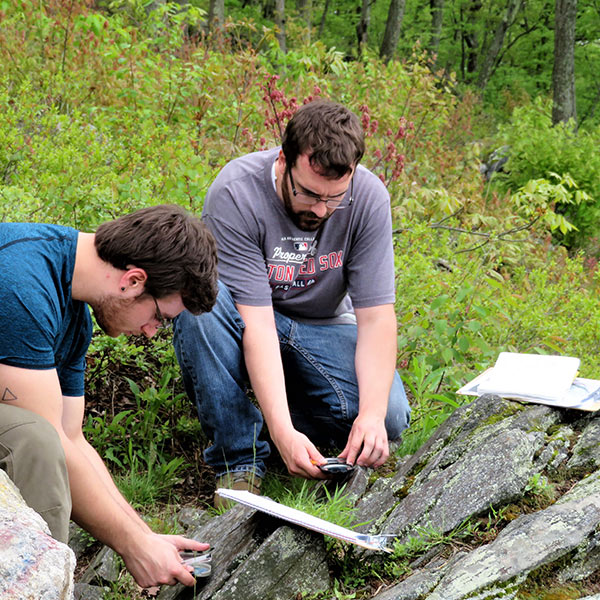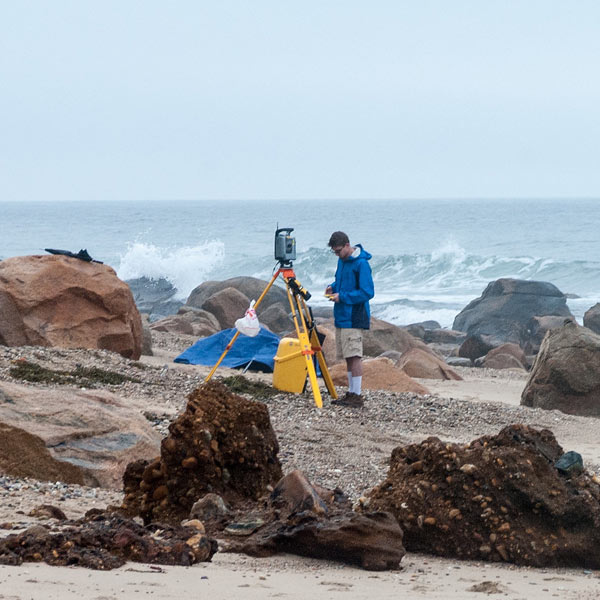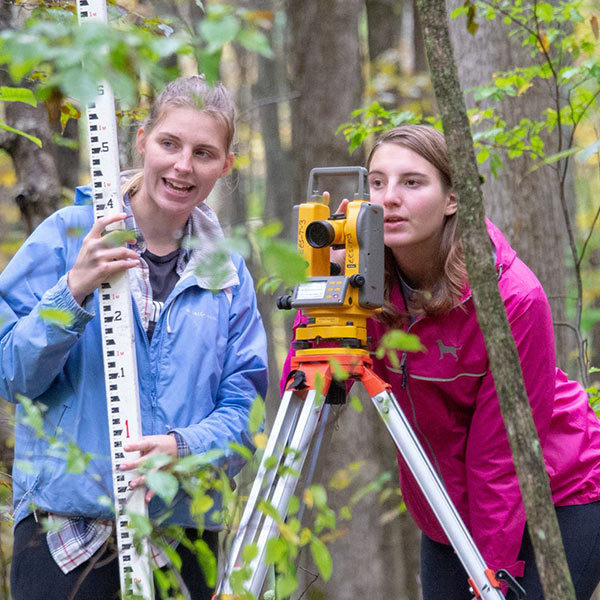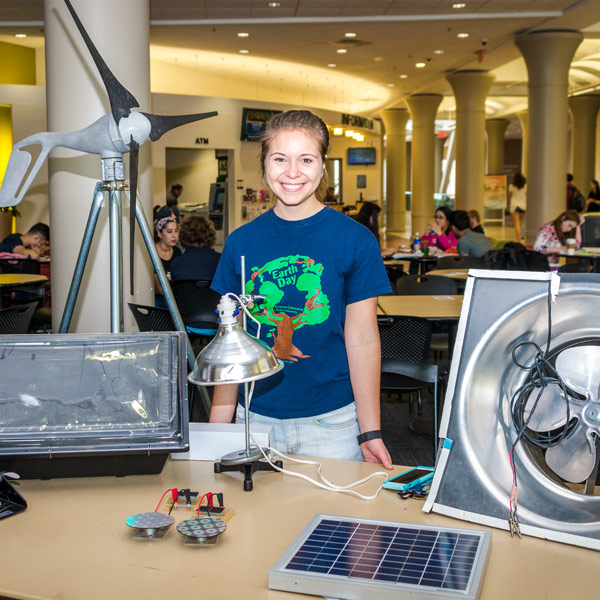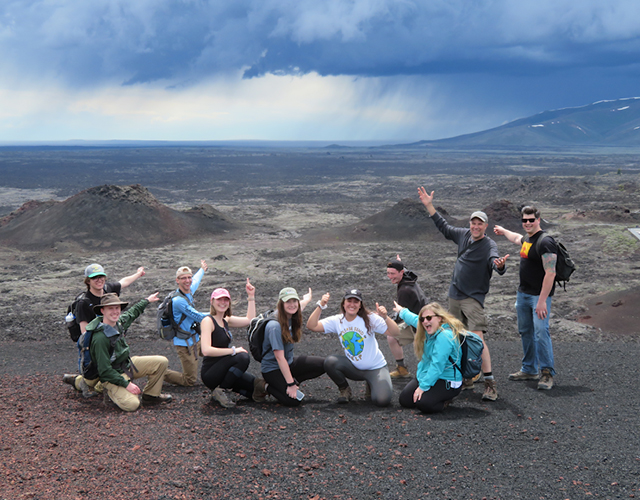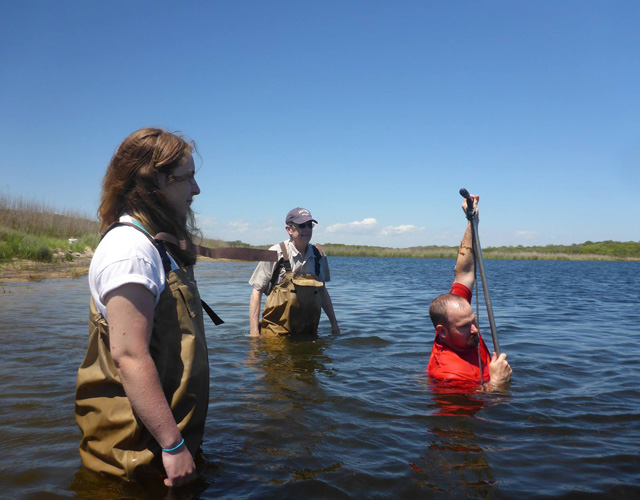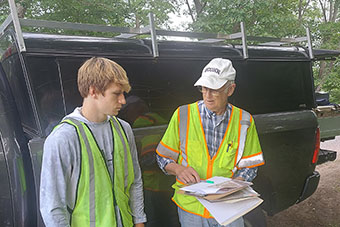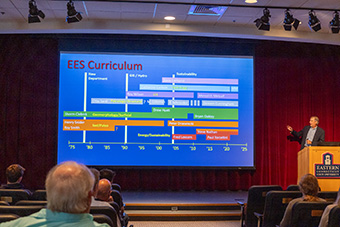Environmental Earth Science (EES) students at Eastern receive a broad education in environmental earth science with a strong foundation in geoscience, using classroom, laboratory and field-based learning. The curriculum stresses the materials, processes, and features of the Earth, Earth history and the ways in which earth scientists address scientific, societal and environmental problems. Students pick from four concentrations in Environmental Earth Science, Environmental Science, General Earth Science or Sustainable Energy Science. A minor is also available to students in other majors.
- Apply
- Visit
- Request Info
- Give





